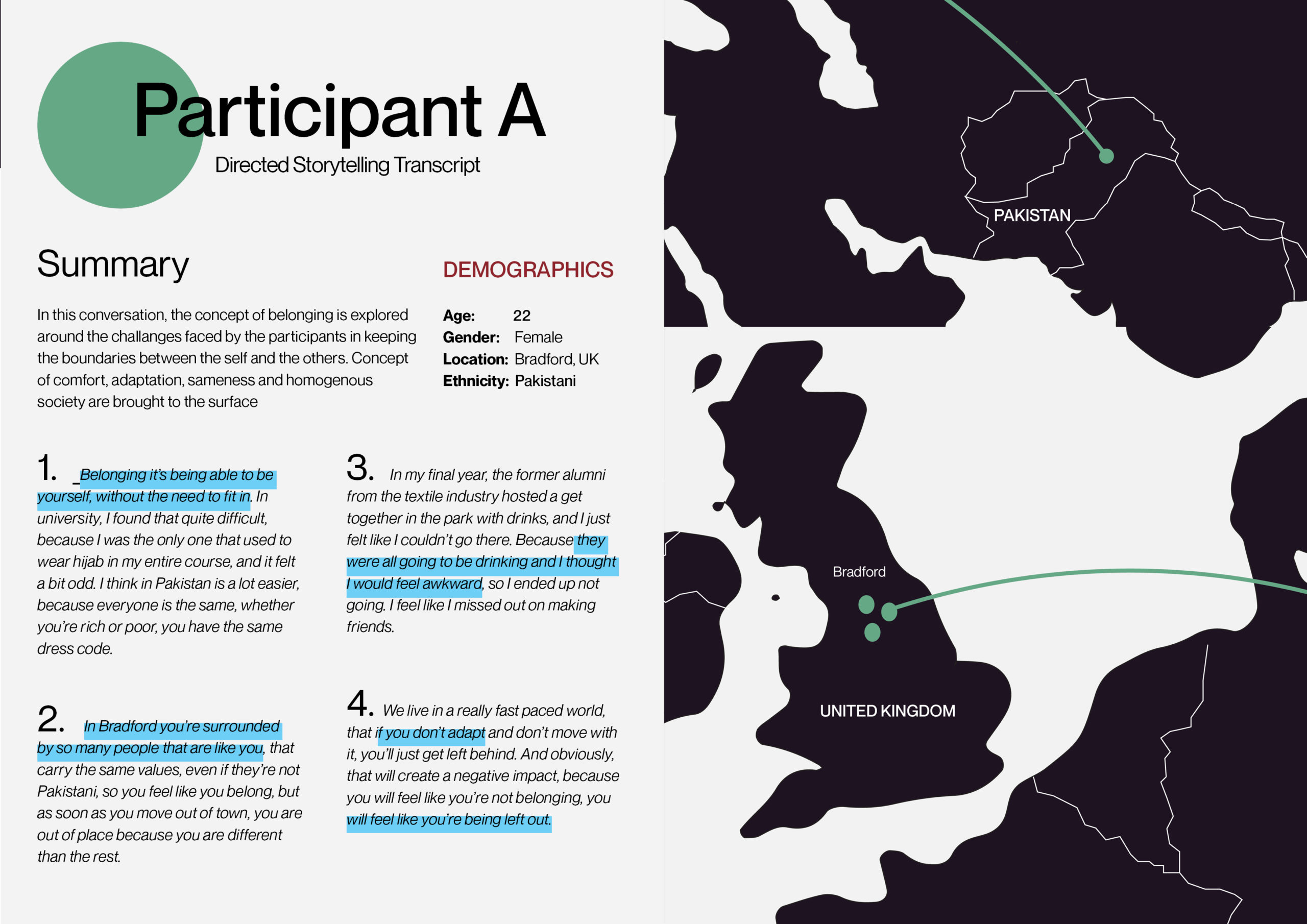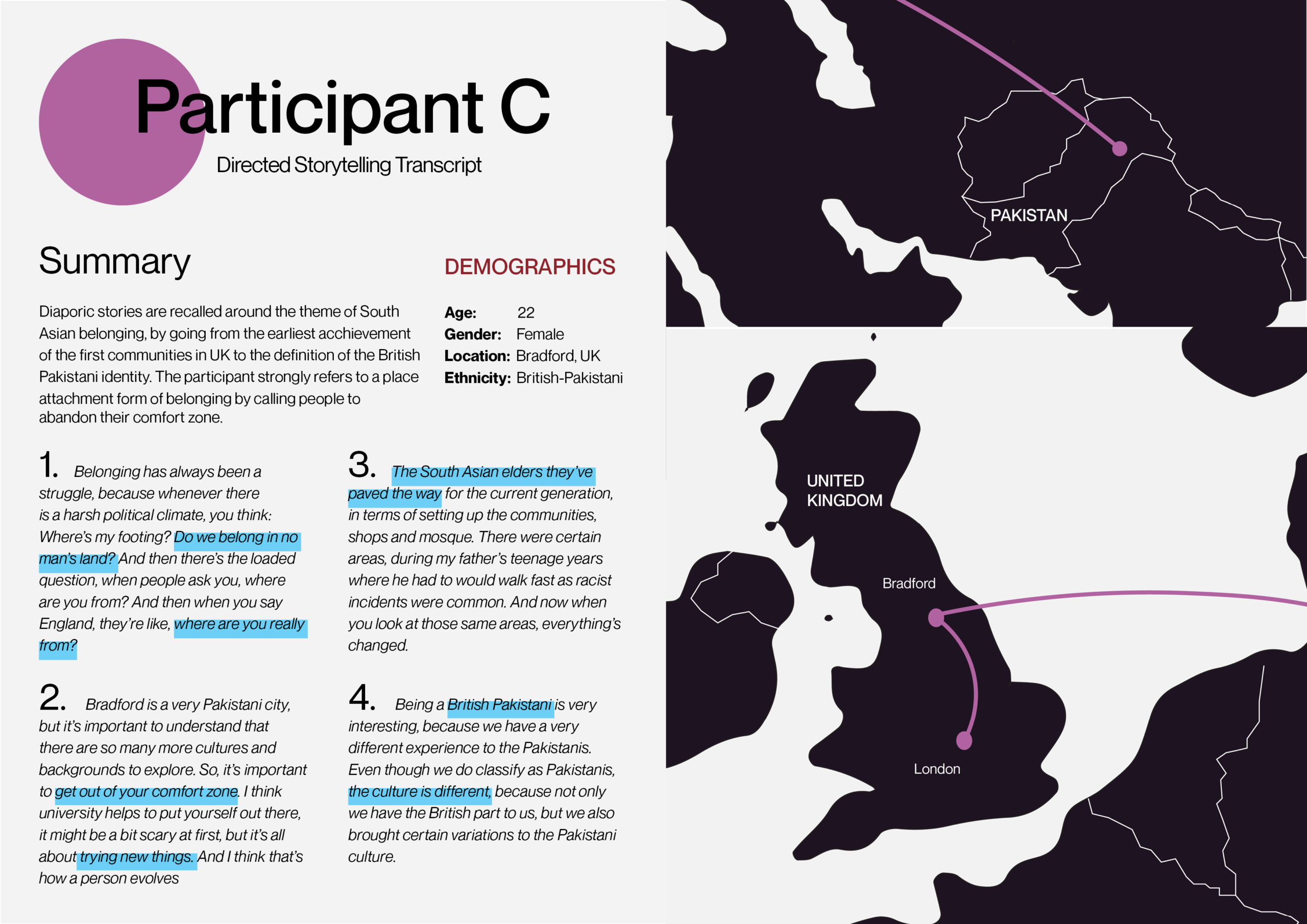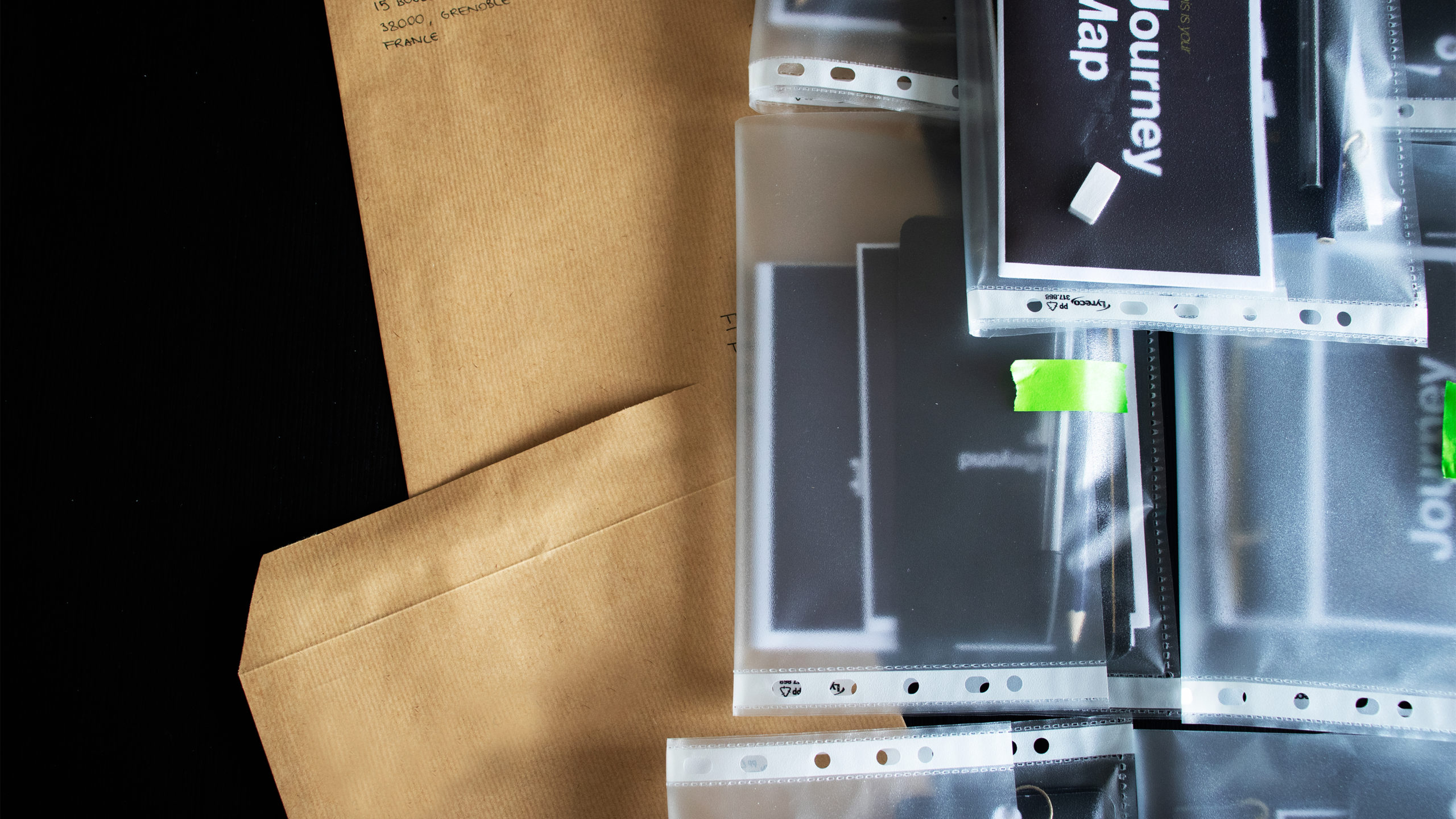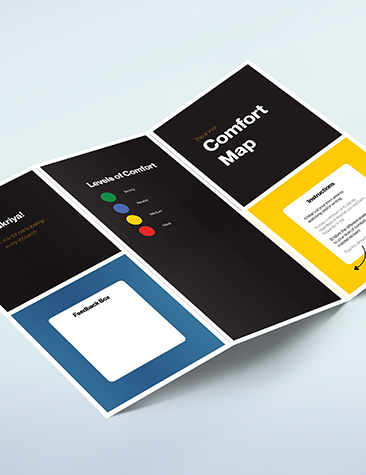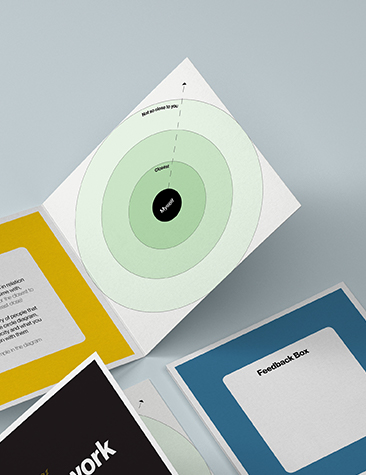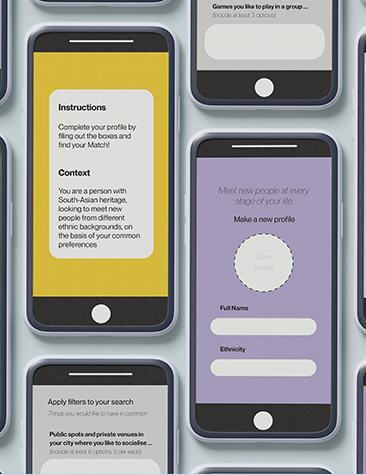Research Question
How can I foster an inter-ethnic sense of belonging, for South Asian people living in the UK?
Overview
“Encounters” is a project, part of my Final Master's Thesis at UAL, aimed at fostering an inter-ethnic sense of belonging for South Asian people living in the UK. The aim was to spark conversation through the act of collaborative building, ultimately aiming to bring people together, despite ethnical, cultural, and religious differences, over a cup of chai.dy
Framework
The project is situated in a globalized world where immigration constitutes a significant portion of the population. The cultural diversity of various ethnic groups often leads to clashes between immigrant and host communities. These conflicts can result in a lack of integration and indifference to differences, contributing to closed-circle communities.
My Role
I served as a researcher, designer, and maker, organizing a community-based workshop. I conducted extensive primary and secondary research, developed the concept, and fabricated the workshop, showcasing my skills in user experience, industrial design, and technology.
Partners
MA UX, UAL
Duration
16 weeks
Methodology
AEIOU
Directed Storytelling
Cultural Probes
Storyboard
Sensemaking & Synthesis
Prototype & Testing
Facilitation
Outcome
The result is a workshop that aims was to spark conversation through the act of collaborative building, ultimately aiming to bring people together, despite ethnical, cultural, and religious differences, over a cup of chai.
AEIOU
Ethnographic research was conducted in South Asian community areas around London. Being the very first touchpoint with the audience and their environment, this was a key step in the development of my understanding of the concept, with all its complexities.
The AEIOU method was conducted in Tooting, a district of London with a high percentage of SouthAsian and other ethnic minorities population, an ideal place to start connecting with people through the spaces and practices that shape and mould their daily lives.
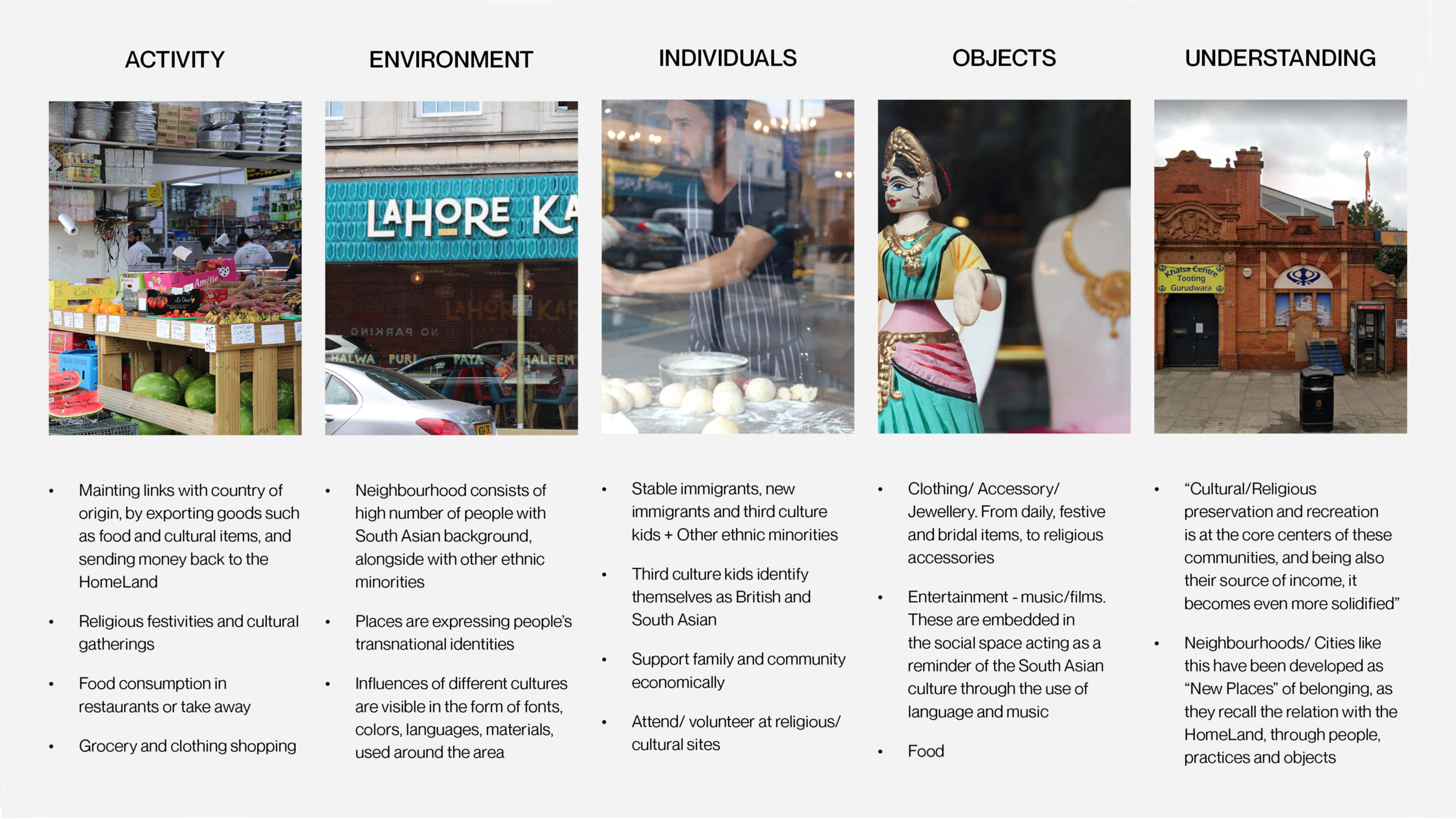
Fig. 1 : Visualitation of the Interviews and obervations findings.
Directed Storytelling
Directed Storytelling method was conducted in-person and remotely with 12 participants of South Asian background, living in UK and EU, aged between 15 - 30.
The structure of the conversations was informal, aiming to grasp the life experiences that shaped the participants in their individual journey, while attempting to identify common patterns and any possible leverage points. The Directed Storytelling was later transcribed, synthetized, and analysed.
Fig. 2: Directed storytelling transcript participant A, B, C
Literature Review
All the insights gathered through primary and secondary research went through a process of sensemaking, attempting to link them all together. Indeed, the concepts surfaced from theethnographic research were found to be strictly connected to the relevant literature on belonging and related practices.
The sensemaking was conducted by using mind maps as media for understanding and communication. The main goal was to visualise all the insights as a whole, bringing them to life, finding new meanings and directions for the project.
Sensemaking
All the insights gathered through primary and secondary research went through a process of sensemaking, attempting to link them all together. Indeed, the concepts surfaced from theethnographic research were found to be strictly connected to the relevant literature on belonging and related practices.
The sensemaking was conducted by using mind maps as media for understanding and communication. The main goal was to visualise all the insights as a whole, bringing them to life, finding new meanings and directions for the project.
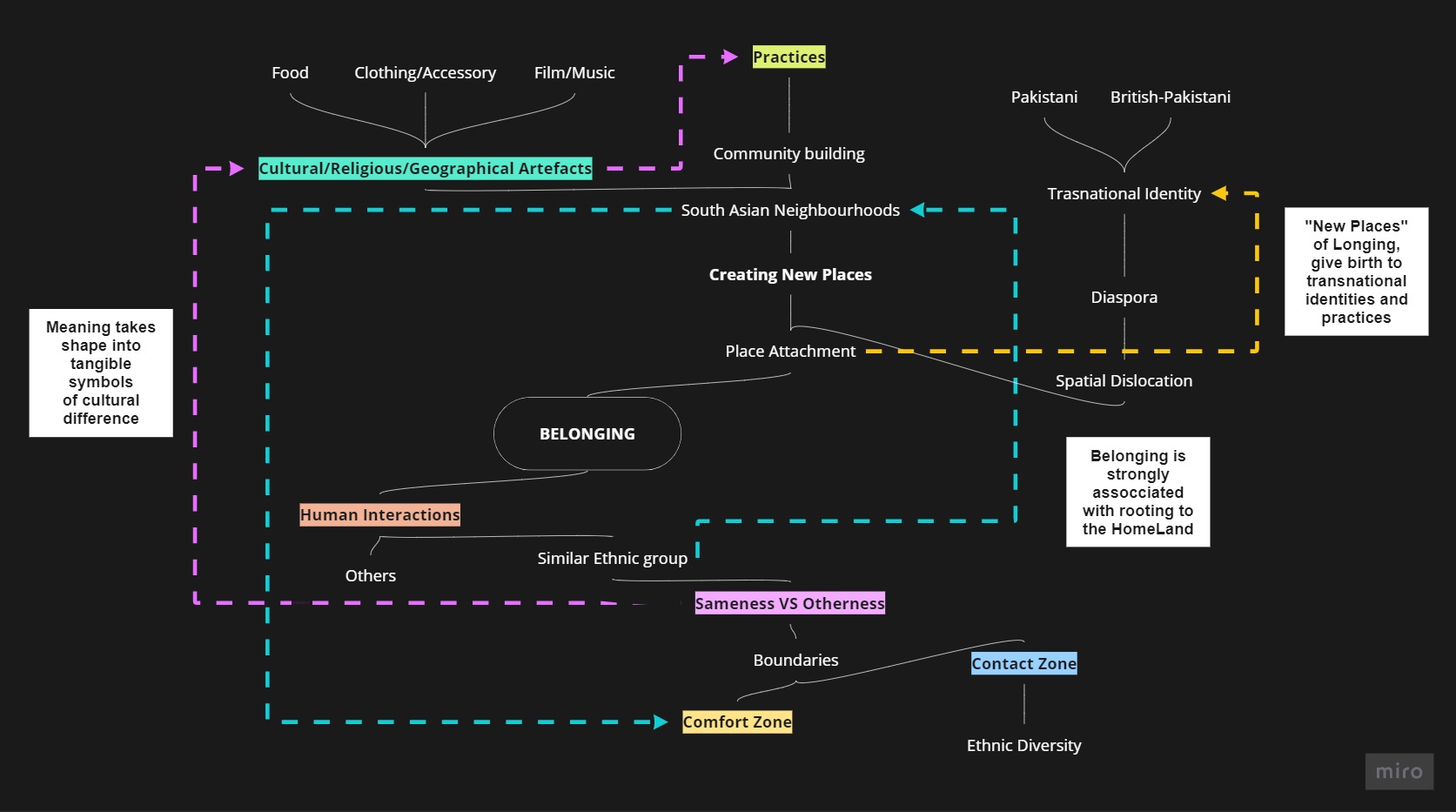
Fig. 3 : Sensemaking phase mindmap
Cultural Probes
Designed based on the knowledge gathered from the phase of sensemaking, the kits were designed according to the following objectives:
1. Map out daily user jouney
2. Understand the neighbourhood of the South Asian audience and their zones of comfort / discomfort.
3. Recognise exhisting commonalities between user and next of kins
4. Identify contact zones, practices and objects around which the encounter can take place
They were sent out to 10 participants across the UK, to be completed in 2 weeks.
All probes were designed to be consistent in graphics and content; they all had a small instruction box and a feedback box.
Fig. 4 : Cultural probes kits ready to be dispatched to the different participants, including Jouney map, Comfort map, Netwrok diary, and Paper app, displayed below
Analysis
The kits were sent out to 10 participants across the UK, to be completed in 2 weeks ‘time.
The probes were later analyzed and synthetized into a mind map highlighting common denominators and differences among the different participants, alongside with the overall learnings gathered.
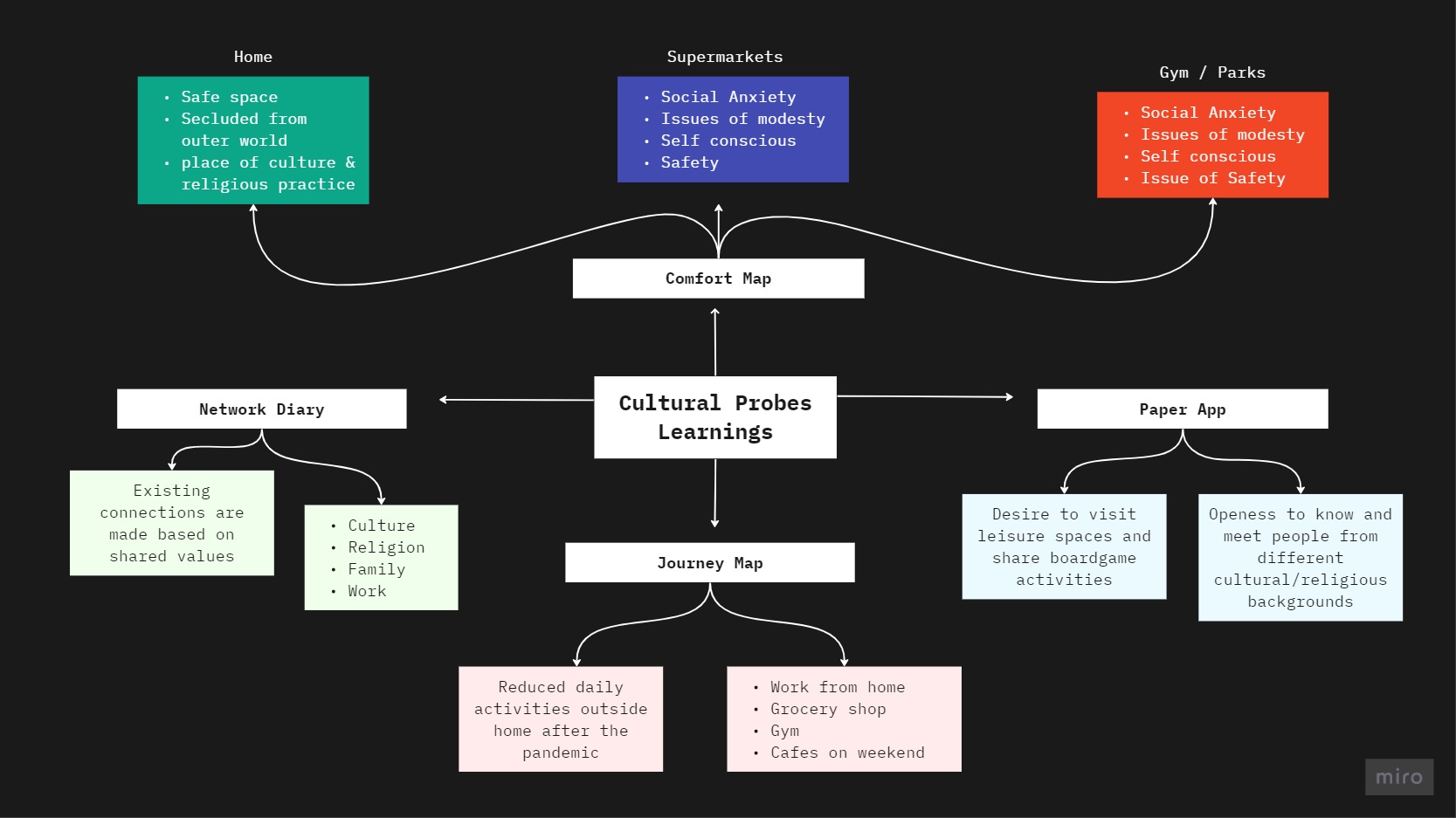
Fig. 5: Cultural probe analysis mindmap
Design Synthesis
All data gathered till this point were synthetized into a potential design solution.
The very first step was bringing together all the characteristics that would have to be present in the outcome, by visualising them in the form of mindmap and reward/risk system’s map.
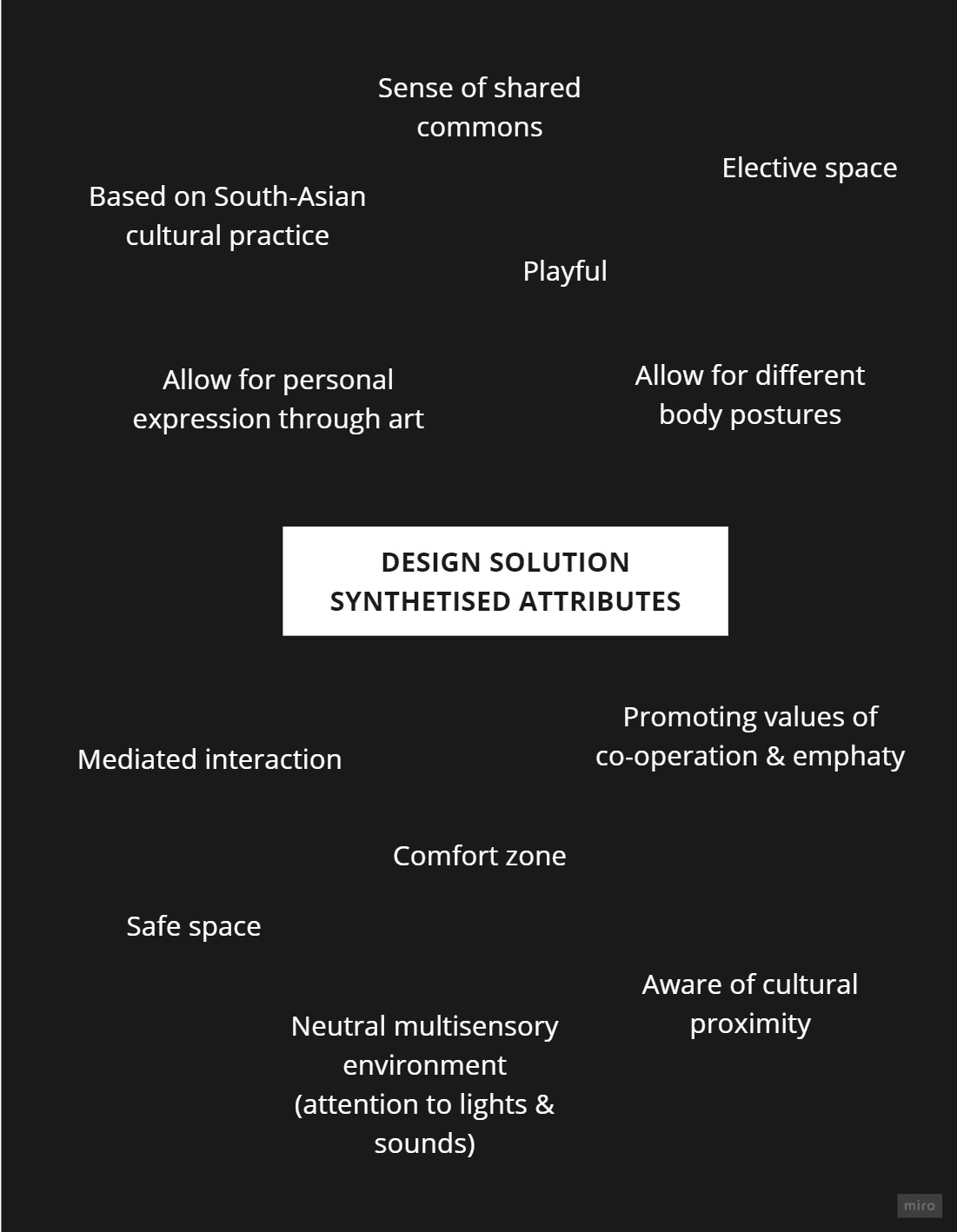
Fig. 6: Design solution synthetised attributes
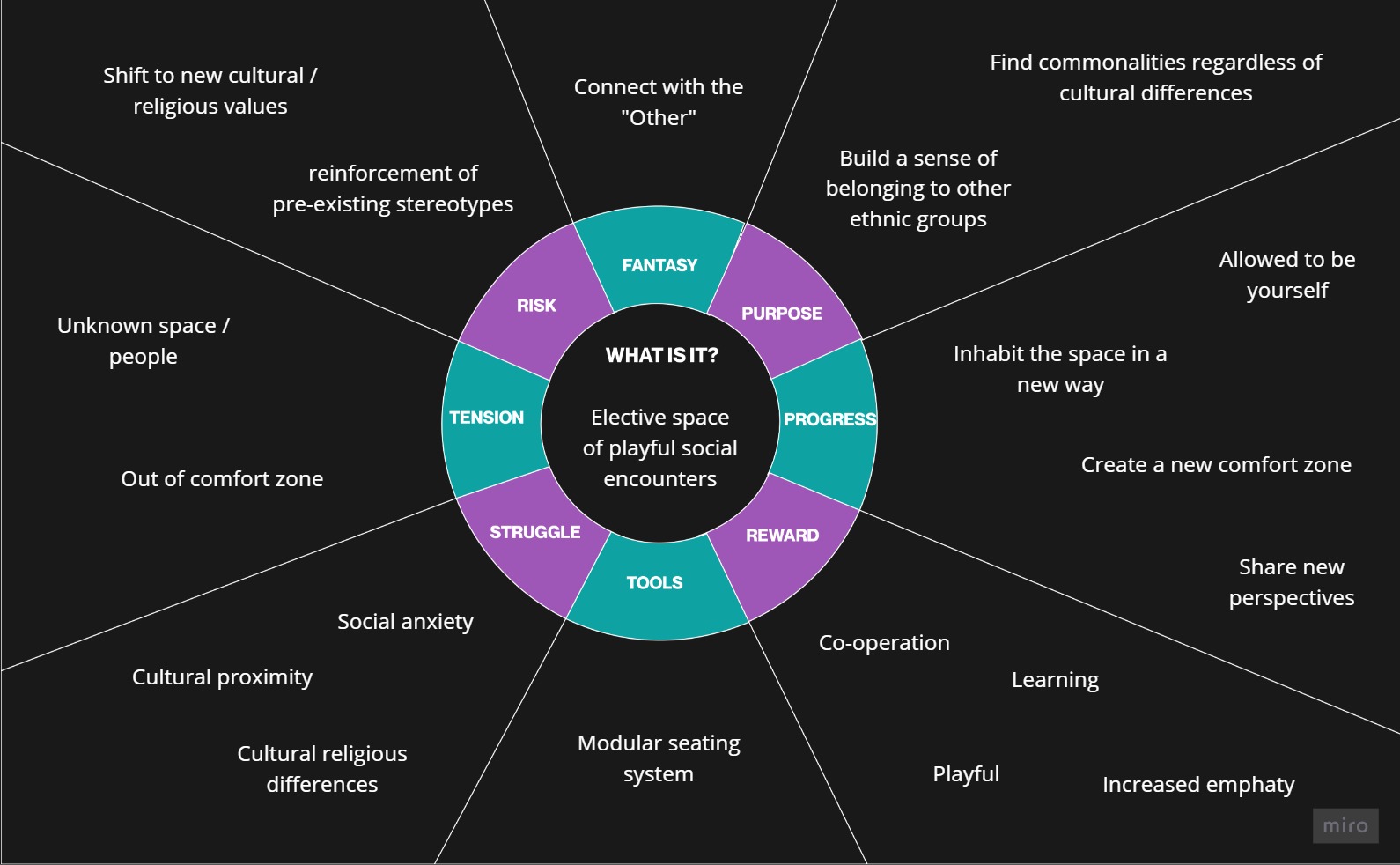
Fig. 7: Reward and risk system map associated with the design solution
Ideation
- The concept of different Body postures also emerged in the conversations, as it was present in different daily tasks and cultural practices, such as praying or eating on the floor with the family.
With the aim to have a seating system that could be used as a tool to spark and facilitate the inter-ethnic interaction, through playfulness, simple modular blocks were initially sketched outlining different possible body postures and scenarios.
Foam blocks were obtained from scarted sofa pieces around london, and were modelled into simple geometrical shapes (triangular, cylindrical and cuboid) to be used and combined in the "Your Play Space" Workshop.
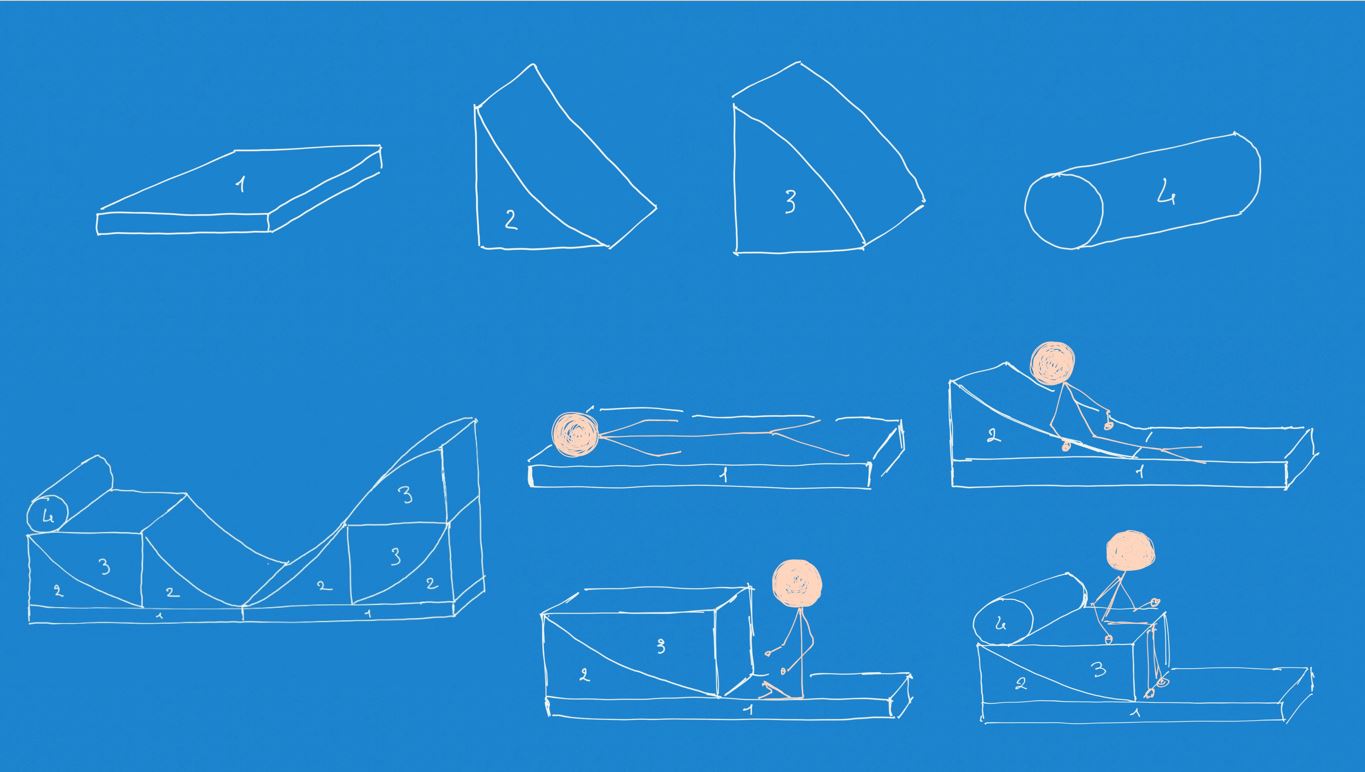
Fig. 8: Body postures and modular seatings visual explorations
Workshop
"Your Play Space"
The "YPS" workshop aimed at exploring different body postures using a modular seating system made of foam material. It was open to people from a mixed ethnic background, aged between 15 and 30.
This was structured as an open and explorative studio aimed at designing a personalised comfort café space, offering the possibility to share the same space with other unknown and known people.
Learnings:
- It was observed how initially people preferred to perform the activity individually. However, after around 10 minutes time, they were more open to share and build together, learning to negotiate and cooperate towards a common goal, without giving up their personal space and comfort.
- Privacy and visibility were collectively prioritised in the building phase and how people felt at ease carrying their bodies differently than what they were used to in a traditional café.
- Interestingly, none of the participants decided to build traditional seating systems like chairs. They rather preferred having a back support and to be in direct contact with the floor, while using sturdier surfaces to hold their food and beverages.
Fig. 9: Video from the "Your Play Space" workshop
Key directions
Exploring South Asian cultural practices and understand how to incorporate them into a workshop activity
p.s. The modular seating design as a final outcome was not taken forward, but the insights and materials of this initial workshop were used in the making of the final design solution.
Inspiration
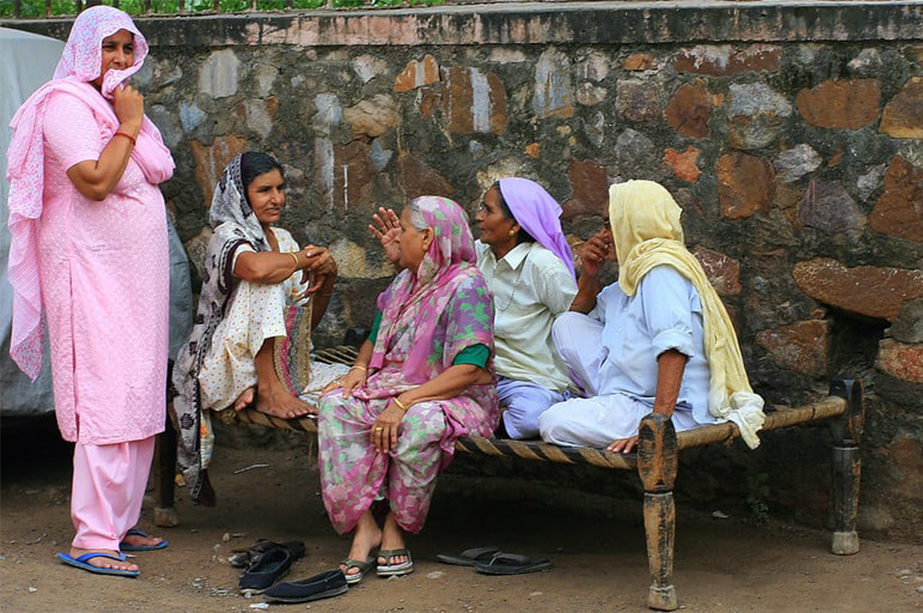
Fig. 10: Showcasing charpai in its native environment
A bed, sofa, table, chair, decoration or something else?
The inspiration for the building part of my outcome was taken by a traditional South Asian bed making practice. It followed the concept that one of the ways to generate belonging is through everyday cultural activities (Fenster, 2005).
Used not only as bed, but also as seating, table, decoration, for meditative purposes, dowry gift, mode of transportation and several other uses, the charpoy is a very diverse tool able to tie people together through its making and uses.
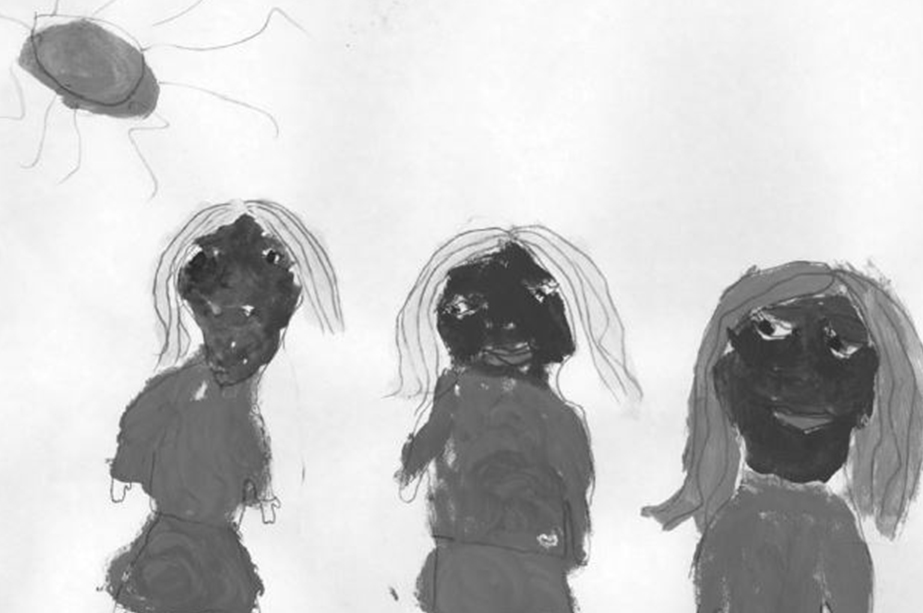
Fig. 11: Examples of paintings created by the participants of ACANE
Participatory Art to support intercultural contact
A project developed by ACANE, enabling intercultural contact through the employment of participatory art practices was at the core of the second inspiration (Cieri, 2004; Cant and Morris, 2006; Pink, 2007; White, 2009).
They used art techniques to address and generate community integration by focusing on social relations, differences and similarities through material engagement.
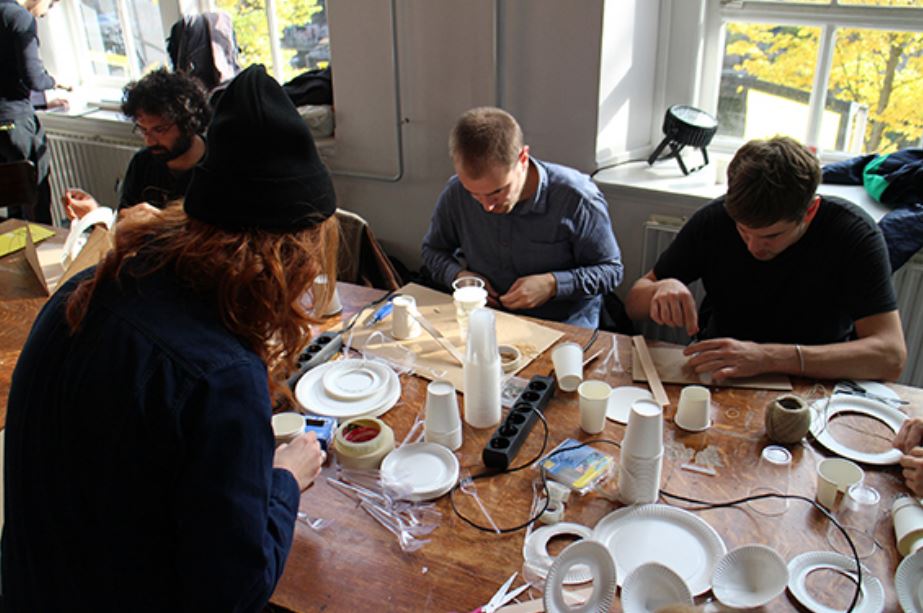
Fig. 12: Participants engaged in the Magic Machine prompts
A different approach to Workshops
Magic Machine project is a useful reference to understand the limitations that workshop formats and other participatory research tools can have when participants and artefacts are perceived as a mere resource of the research process, generating data for a pre-defined static vision (Andersen et al, 2019).
Storyboard
The method of storyboarding was used to visualise in low fidelity the final workshop. It was helpful in defining the physical arrangement of objects, interactions and facilitation required.
The ultimate goals were to create a comfort space, to bring people together, and to build collaboratively. The inspiration theme at the centre of the workshop was the making practice of a traditional South Asian bed.

Fig. 13: Storyboard of the workshop structure
Trial workshop
Once all the required prototypes and probes were available, some in low fidelity, a trial workshop was run with a mixed group of students and outsiders.
Learnings:
- Presence of diverse material range sparked curiosity, allowing for personal expression. The combination of materials was also easily weavable, leading to the creation of a hybrid surface in texture, color and sturdiness.
- Participants tended to pair up with someone they knew, due to the first prompt of creating teams by selecting preferred values/ items.
- Spontaneous conversation was taking place but in some cases an extra push was required to get the person out of their shell.

Fig. 14: Trial workshop
Final Event
The structure of the workshop involved pairing groups of people arbitrarily and having them work together on a common goal, the weaving of tea tabletops, for 15 minutes, while answering to each other to an ice-breaking question handed over in the form of a card, designed to promote spontaneous conversations.
Afterwards, partners were exchanged, and each participant continued working on a different workstation. This arrangement was repeated three additional times, for a total duration of one hour. Once the tables were completed, the ice-breaking cards were finally hanged on the tabletops as memory of their micro conversations.
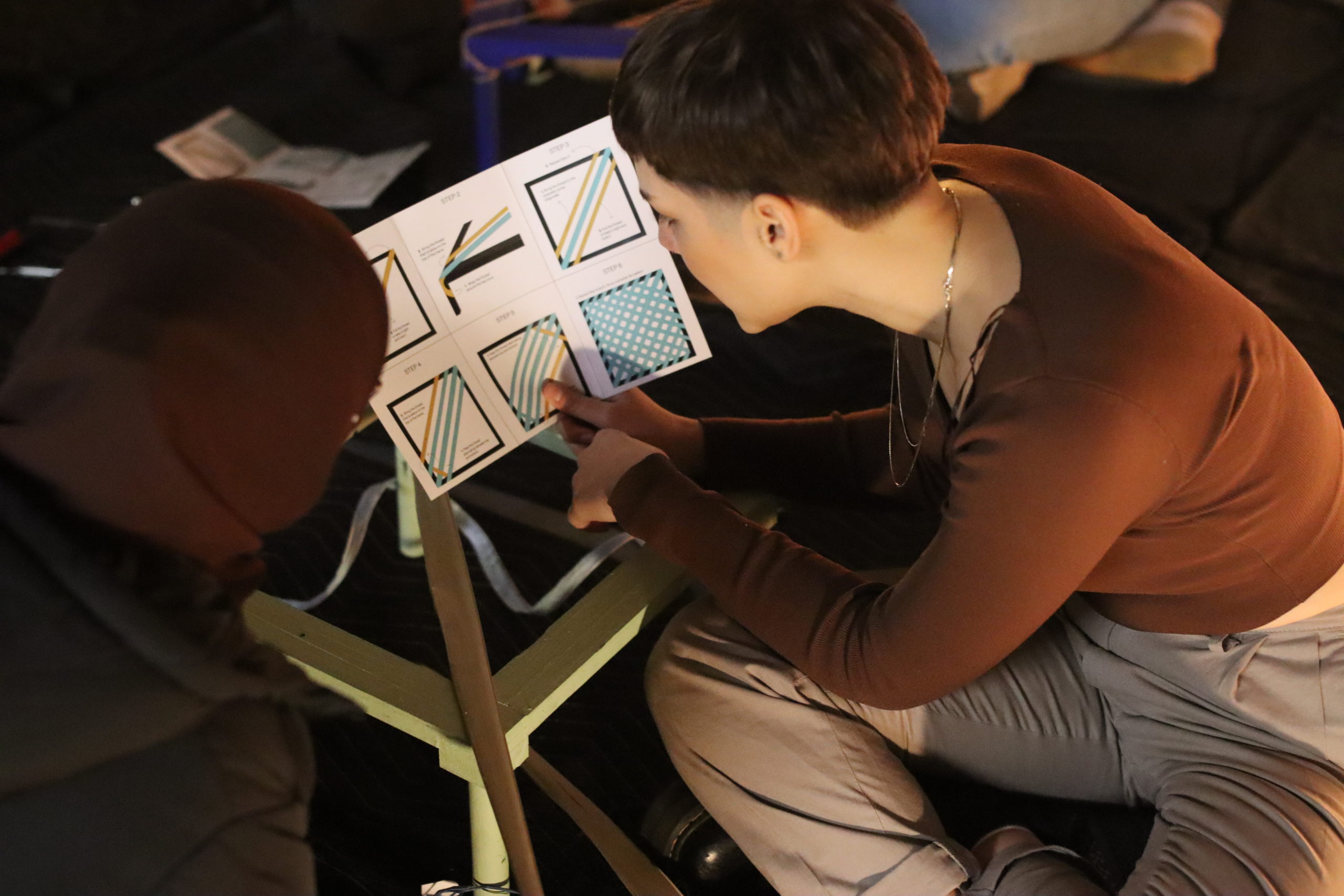
Fig. 15: Final event video
Artefacts
The main activity of the workshop involved the building of small tea tabletops, inspired by thetraditional South Asian bed weaving practice, seen as a creative explorative tool.
The activity consisted in the using of wooden frames, pre-built by myself, and a wide range of materials, such as paper, palm leaves, raffia, threads, and nets, allowing for personal expression and diversity.
The built artefacts were all unique pieces, connecting the different cultures, ethnicities and individual personalities and perceptions of all the participants.
The tea tables created through the workshop were later exhibited in the UAL Postgraduate Showcases 2022

Fig. 16: Example of final Artefact
Learnings
It was observed that all participants of the workshop were female. This presents an opportunity to explore the dynamics and preferences unique to female participants, and raises questions about the effectiveness of creative activities for males. Moving forward, there is a need to develop strategies for facilitating mixed-gender workshops.
Future Applications
The outcome could be used by anyone who wishes to engage meaningfully with South Asian communities. It can also be replicated and adjusted to suit different audiences, as inter-ethnic belonging is a universally recognized human approach. Its applications include use by governments, organizations, or individuals seeking to promote cross-cultural understanding. like speech, writing, and hand gestures.
Research Question
How can I foster an inter-ethnic sense of belonging, for South Asian people living in the UK?
Duration
16 weeks
Overview
“Encounters” is a project, part of my Final Master's Thesis at UAL, aimed at fostering an inter-ethnic sense of belonging for South Asian people living in the UK.
Framework
The project is situated in a globalized world where immigration constitutes a significant portion of the population. The cultural diversity of various ethnic groups often leads to clashes between immigrant and host communities. These conflicts can result in a lack of integration and indifference to differences, contributing to closed-circle communities.
My Role
I served as a researcher, designer, and maker, organizing a community-based workshop. I conducted extensive primary and secondary research, developed the concept, and fabricated the workshop, showcasing my skills in user experience, industrial design, and technology.
Outcome
The result is a workshop that aims was to spark conversation through the act of collaborative building, ultimately aiming to bring people together, despite ethnical, cultural, and religious differences, over a cup of chai.
Field Research
Ethnographic research was conducted in South Asian community areas around London. Being the very first touchpoint with the audience and their environment, this was a key step in the development of my understanding of the concept, with all its complexities.
The AEIOU method was conducted in Tooting, a district of London with a high percentage of SouthAsian and other ethnic minorities population, an ideal place to start connecting with people through the spaces and practices that shape and mould their daily lives.

Fig. 1 : Visualitation of the AEIOU Research, conducted in Tooting, Uk.
Tales of be-longing
Directed Storytelling method was conducted in-person and remotely with 12 participants of South Asian background, living in UK and EU, aged between 15 - 30.
The structure of the conversations was informal, aiming to grasp the life experiences that shaped the participants in their individual journey, while attempting to identify common patterns and any possible leverage points. The Directed Storytelling was later transcribed, synthetized, and analysed.
Fig. 2: Directed storytelling transcript participant A
Sensemaking
All the insights gathered through primary and secondary research went through a process of sensemaking, attempting to link them all together. Indeed, the concepts surfaced from the ethnographic research were found to be strictly connected to the relevant literature on belonging and related practices.
The sensemaking was conducted by using mind maps as media for understanding and communication. The main goal was to visualise all the insights as a whole, bringing them to life, finding new meanings and directions for the project.

Fig. 9 : Sensemaking phase mindmap
Cultural Probes
Designed based on the knowledge gathered from the phase of sensemaking, the kits were designed according to all the aspects I wanted to explore. They were sent out to 10 participants across the UK, to be completed in 2 weeks.
All probes were designed to be consistent in graphics and content; they all had a small instruction box and a feedback box.
Fig. 10 : Cultural probes kits ready to be dispatched to the different participants, including Jouney map, Comfort map, Netwrok diary, and Paper app, displayed below
Synthesis
All data gathered till this point were synthetized into a potential design solution.
The very first step was bringing together all the characteristics that would have to be present in the outcome, by visualising them in the form of mindmap and reward/risk system’s map.

Fig. 12: Design solution synthetised attributes

Fig. 13 : Reward and risk system map associated with the design solution
Ideation
With the aim to have a seating system that could be used as a tool to spark and facilitate the inter-ethnic interaction, through playfulness, simple modular blocks were initially sketched outlining different possible body postures and scenarios.
Foam blocks were obtained from scarted sofa pieces around london, and were modelled into simple geometrical shapes (triangular, cylindrical and cuboid) to be used and combined in the "Your Play Space" Workshop.

Fig. 14: Body postures and modular seatings visual explorations
Testing
"Your Play Space"
The "YPS" workshop aimed at exploring different body postures using a modular seating system made of foam material. It was open to people from a mixed ethnic background, aged between 15 and 30.
This was structured as an open and explorative studio aimed at designing a personalised comfort café space, offering the possibility to share the same space with other unknown and known people.
Fig. 15: Video from the "Your Play Space" workshop
Key directions
Exploring South Asian cultural practices and understand how to incorporate them into a workshop activity
p.s. The modular seating design as a final outcome was not taken forward, but the insights and materials of this initial workshop were used in the making of the final design solution.
Inspiration

Fig. 16 : Showcasing charpai in its native environment
A bed, sofa, table, chair, decoration or something else?
The inspiration for the building part of my outcome was taken by a traditional South Asian bed making practice. It followed the concept that one of the ways to generate belonging is through everyday cultural activities (Fenster, 2005).
Used not only as bed, but also as seating, table, decoration, for meditative purposes, dowry gift, mode of transportation and several other uses, the charpoy is a very diverse tool able to tie people together through its making and uses.

Fig. 17 : Examples of paintings created by the participants of ACANE
Participatory Art to support intercultural contact
A project developed by ACANE, enabling intercultural contact through the employment of participatory art practices was at the core of the second inspiration (Cieri, 2004; Cant and Morris, 2006; Pink, 2007; White, 2009).
They used art techniques to address and generate community integration by focusing on social relations, differences and similarities through material engagement.

Fig. 18 : Participants engaged in the Magic Machine prompts
A different approach to Workshops
Magic Machine project is a useful reference to understand the limitations that workshop formats and other participatory research tools can have when participants and artefacts are perceived as a mere resource of the research process, generating data for a pre-defined static vision (Andersen et al, 2019).
Storyboard
The method of storyboarding was used to visualise in low fidelity the final workshop. It was helpful in defining the physical arrangement of objects, interactions and facilitation required.
The ultimate goals were to create a comfort space, to bring people together, and to build collaboratively. The inspiration theme at the centre of the workshop was the making practice of a traditional South Asian bed.

Fig. 19: Storyboard of the workshop structure
Prototype, test, and iterate
Once all the required prototypes and probes were available, some in low fidelity, a trial workshop was run with a mixed group of students and outsiders.
The aim was to understand if the workshop was effective enough in engaging people into spontaneous conversations, the efficiency of the facilitation, along with observing the employment of diverse materials such as paper, palm leaves, raffia, threads, and nets.
Thanks to observations and open feedbacks from the participants, different changes into the content and structure of the workshops were made.

Fig. 20 : Trial workshop
Final Event
The structure of the workshop involved pairing groups of people arbitrarily and having them work together on a common goal, the weaving of tea tabletops, for 15 minutes, while answering to each other to an ice-breaking question handed over in the form of a card, designed to promote spontaneous conversations.
Afterwards, partners were exchanged, and each participant continued working on a different workstation. This arrangement was repeated three additional times, for a total duration of one hour. Once the tables were completed, the ice-breaking cards were finally hanged on the tabletops as memory of their micro conversations.

Artefacts
The main activity of the workshop involved the building of small tea tabletops, inspired by thetraditional South Asian bed weaving practice, seen as a creative explorative tool.
The activity consisted in the using of wooden frames, pre-built by myself, and a wide range of materials, such as paper, palm leaves, raffia, threads, and nets, allowing for personal expression and diversity.
The built artefacts were all unique pieces, connecting the different cultures, ethnicities and individual personalities and perceptions of all the participants. T
he tea tables created through the workshop were later exhibited in the UAL Postgraduate Showcases 2022

Fig. 22 : Example of final Artefact
Learnings
It was observed that all participants of the workshop were female. This presents an opportunity to explore the dynamics and preferences unique to female participants, and raises questions about the effectiveness of creative activities for males. Moving forward, there is a need to develop strategies for facilitating mixed-gender workshops.
Future Directions
The outcome could be used by anyone who wishes to engage meaningfully with South Asian communities. It can also be replicated and adjusted to suit different audiences, as inter-ethnic belonging is a universally recognized human approach. Its applications include use by governments, organizations, or individuals seeking to promote cross-cultural understanding. like speech, writing, and hand gestures.
